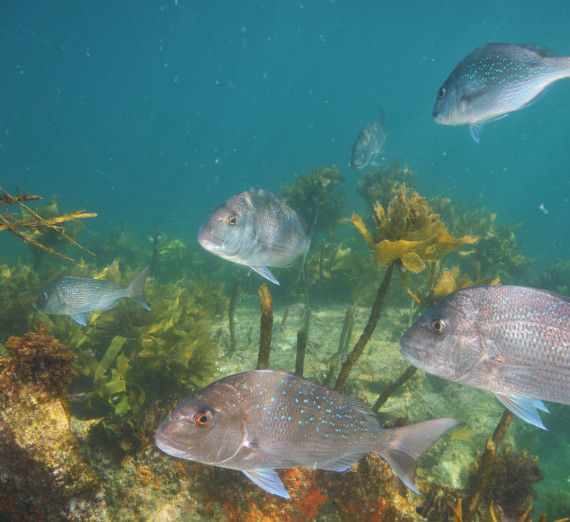Exploring Historical Ecosystems Through Innovative Techniques

In a study published in Global Change Biology, Dr. Jens Hegg from the College of Arts and Sciences led data analysis for an international team to uncover 800 years of fish migration patterns in New Zealand snapper. Using advanced techniques from speech recognition and big data analytics, the research revealed significant shifts in migration with the onset of the industrial revolution. This work challenges current conservation goals and underscores the importance of understanding historical ecosystems to set accurate benchmarks for a healthy environment. Learn more about Dr. Hegg's work:

The inner ear of fish stores detailed records of each fish’s migration in the chemistry of their microscopic daily rings. Using techniques borrowed from speech recognition and “big data” analytics Dr. Jens Hegg led data analysis for an international team of researchers from New Zealand. The study looked at detailed records from over 800 years of fish migration in New Zealand snapper, an imperiled but culturally iconic species. The results challenge us to re-evaluate what successful conservation goals and a healthy ecosystem actually look like, and whether our perception of the natural world is biased by the changes we weren’t alive to see.
The samples span the period from near the first settlement of New Zealand by the Māori to the present, revealing for the first time that New Zealand snapper migration changed in concert with the onset of the industrial revolution. The analysis technique, called dynamic time warping, was introduced to the field of ecology by Dr. Hegg and showed clear changes in snapper migration patterns as industrialization began in New Zealand. Snapper began spending less time rearing in productive, protected, estuaries that have become more silty and turbid due to land use change. This shift away from estuaries was known, but how early the shift began was a surprise, indicating that there is potentially untapped potential to recover the population beyond the current recovery goals.
This glimpse into the past provides an example of how to overcome shifting baseline syndrome, the tendency to assume the natural world we grew up in is “normal”. If we don’t know what ecosystems looked like in the past we risk setting conservation goals that reflect our own biased understanding of what a ”normal” or “healthy” ecosystem looks like based on limited historical experience. However, many populations and ecosystems don’t have research records that stretch very far into the past. Using creative ways to recover the way ecosystems functioned further back in history can help avoid setting mistaken conservation goals. These paleoecological techniques are increasingly important as the pace of ecosystem change is accelerating and setting conservation goals becomes more difficult.
Images courtesy of Adobe Stock Images

